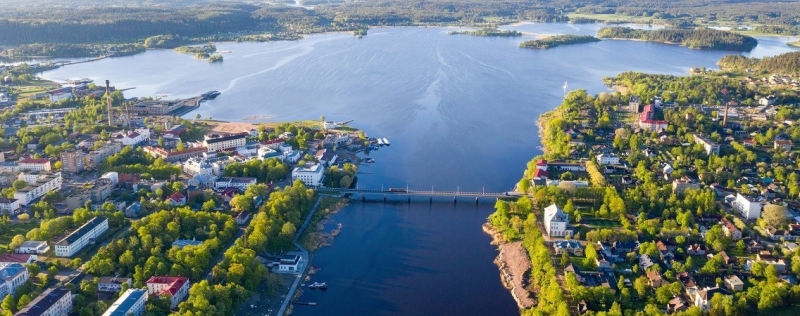
It is from this small town not far from the Finnish border that one begins to get acquainted with the region. However, many tourists undeservedly deprive Sortavala of attention, immediately setting off to explore the skerries of Ladoga and other amazing places in Karelia. We’ll tell you why it’s worth staying longer in the city.
History and sights
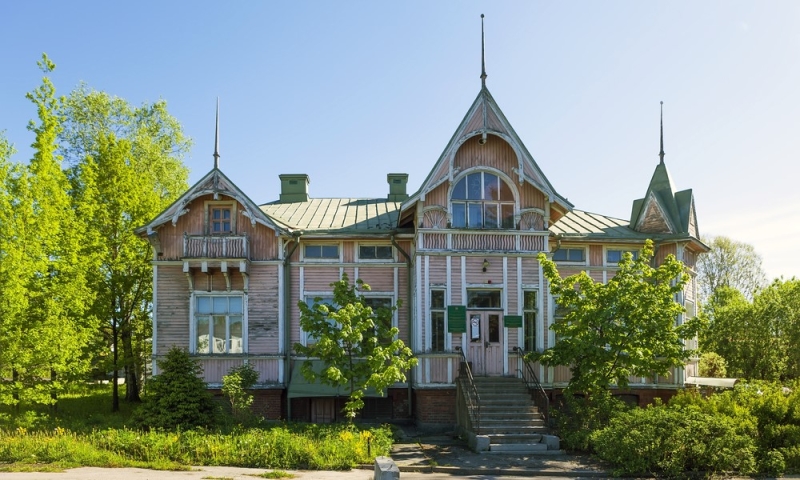
Sortavala stands on the northern shore of the largest body of water in Europe – Lake Ladoga. Throughout its history, the city changed its “citizenship” several times: it belonged to Sweden, Finland, and Russia, and from all these periods Sortavala left its significant traces.
The first settlers on these lands were the Sami tribes, who chose the picturesque area 8 thousand years ago. Then, in the 7th–9th centuries, the Finno-Ugrians came here from the territories of Finland and Estonia; the mixing of blood marked the beginning of a new nation – the Karelians. The Novgorodians were the first to begin trading with the Karelians: in the 12th century they gave this area its first name, Serdovolye, and annexed it to the Novgorod Republic.
However, the Swedes always claimed these territories, and in 1617, according to the Stolbovo Peace Treaty, the Serdovolsky churchyard went to Sweden. Then King Gustav II Adolf founded a settlement here and named it Sordavalla. True, the region did not live long under the rule of harsh Europeans: a hundred years later, according to the Treaty of Nystadt in 1721, Sordavalla ceded to the Russian Empire and became part of the Vyborg province, and at the same time was renamed again – Serdobol.
In the 19th century, the local population was already predominantly Finnish; only a small number of Russians and Swedes lived in Sortavala. When the Grand Duchy of Finland became the independent country of Finland in 1918, Serdobol joined it and received its current name – Sortavala. And only in 1940, after the end of the Winter War, Sortavala and Karelia ceded to the USSR.
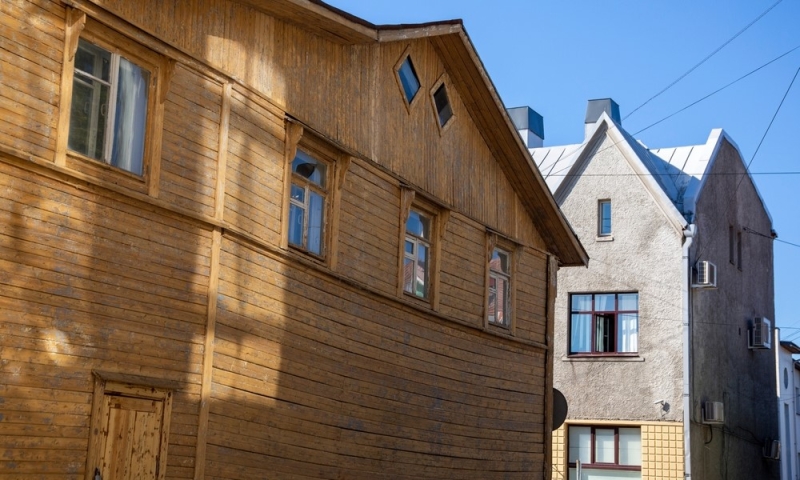
Despite such an unusual history, Sortavala residents honor all its chapters: this is embodied in the unusual northern architecture of the city. In its central part today you can find stone 3-4-story buildings of the early 20th century in the styles of northern modernism, national romanticism and neoclassicism, their authors are the famous Finnish architects Uno Werner Ulberg, Gottlieb Eliel Saarinen and Johan Jacob Arenberg. The most interesting and well-preserved buildings are the Leander House, which looks like a small castle, the house of the merchant Siitonen, the United Bank of the Nordic Countries (now there is a post office), the former women’s gymnasium and the building of the publishing house of spiritual literature Risti ja Raamattu. Moreover, even wooden buildings from the mid-19th century have been preserved, usually in the Empire style – such, for example, include the historical fire station and the city hall, built in 1885 according to the design of the Finnish-Swedish architect Frans Sjöström (today there is an ethnographic museum inside) . A cemetery and a military burial ground have also been preserved in Sortavala from Finnish times.
You can get acquainted with the history of the region by visiting the Regional Museum of the Northern Ladoga Region and the Kronid Gogolev Exhibition Center – there, in particular, the works of this famous woodcarver dedicated to the Karelian epic, including the Kalevala, are exhibited. Also, the historical park “Bastion”, on the territory of which the Viking Age living history museum Svartbjornborg, where reconstructions and costume performances are held, is also a reference to the past of Sortavala.
“Ruskeala Express”
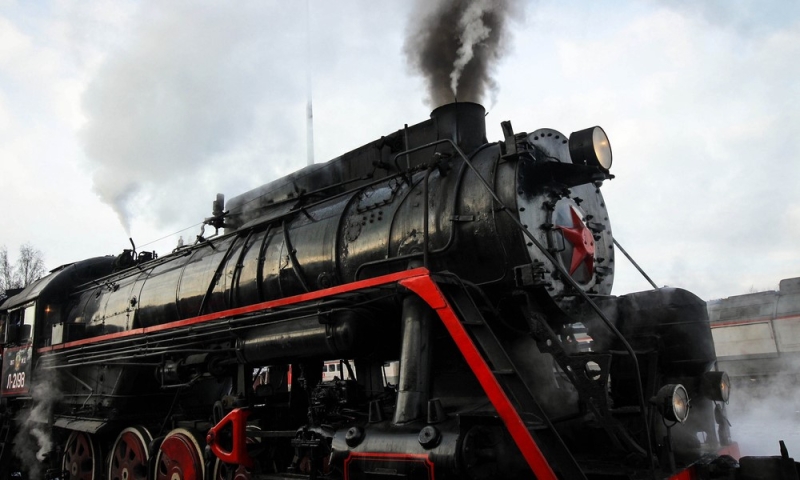
Perhaps the main attraction of Sortavala is the regular historical steam-powered train “Ruskeala Express”, which runs between the city and the Ruskeala mountain park. It has five retro cars (including a dining car), so traveling on this train is an interesting experience.
Today, the railway connecting Sortavala and Ruskeala runs along the route by which Ruskeala marble was delivered from the famous quarry to Lake Ladoga. Interestingly, the interiors of the express were partly inspired by the interior decoration of the carriage on which the architect of St. Isaac’s Cathedral Auguste Montferrand came to Ruskeala, and the VIP compartment was made in the image of the carriage in which Emperor Nicholas II traveled from St. Petersburg to Helsinki.
In the restaurant car of the Ruskeala Express, Karelian cuisine is served, and in the second car there is a photo compartment, decorated in the style of a first-class compartment of the late 19th century. Here you can use the props to create antique-style photographs.
Ruskeala Express runs daily. It departs from Sortavala station at 10:40, the journey time is only an hour. The cost of a ticket varies from 299 to 8,000 rubles* and depends on the class of carriage, the date of purchase of the ticket and the desired additional services.
Karelia for the weekend: where to go from Sortavala
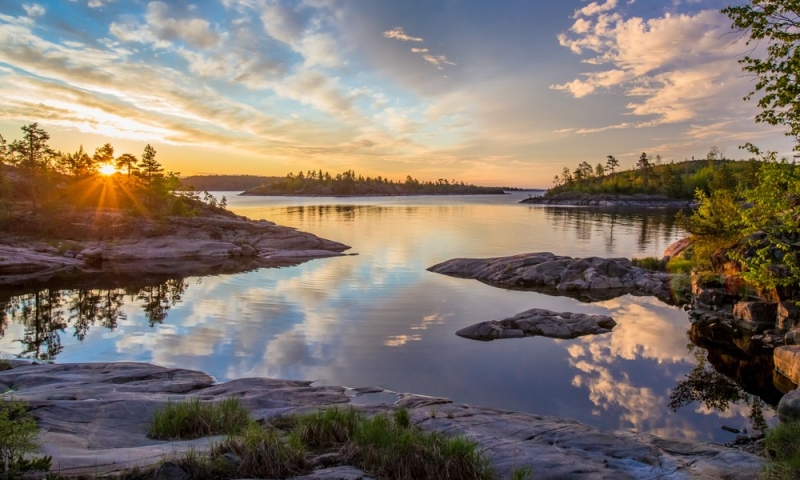
Sortavala is a great place to stay if you plan to explore Karelia by public transport and are visiting for a short period of time (for example, for a weekend): it is connected to most natural and historical attractions by regular bus or water services. And to visit some wonderful places you don’t have to leave the city at all.
Mount Paaso – a small hill not far from Sortavala. In fact, this is not just a mountain, but a real ancient Karelian settlement, discovered at the end of the 19th century by the Finnish archaeologist Otto Appelgren. Archaeologists believe that the fortification has existed here since the Viking Age, and the artifacts found – ceramic fragments, arrow and spear tips, sword fragments, jewelry – date back to the 12th–13th centuries. The hill offers magnificent views of Karelian landscapes and Lake Ladoga: it is better to come here before sunset or early in the morning, with the first rays of the sun.
Another beautiful viewpoint near Sortavala – Vakkosalmi Park, a favorite vacation spot for city residents. It was founded in 1874 on the initiative of noble Sortavala residents – district judge Berg, district doctor Hjalström, director of the teacher’s seminary Genets and pharmacist Relander. Here you can not only admire nature, but also take part in city festivals or competitions: for example, listen to one of the musical concerts organized on the Singing Field, a place with unique natural acoustics.
We have already mentioned Ruskeala Park, one of the most beautiful locations in the Northern Ladoga region. Here is the largest marble deposit, from where stone was mined for cladding not only St. Isaac’s Cathedral, but also the Hermitage, Kazan Cathedral, Marble Palace, Mikhailovsky Castle and even two St. Petersburg metro stations – Primorskaya and Ladoga. In addition to the famous Marble Canyon with emerald-colored water, the park contains adits with an Underground Lake and the Ahinkoski Waterfall (in fact, this is not really a waterfall, but a high threshold of the Tohmajoki River). People come here for hiking and horseback riding, rafting and even diving; and every summer the park hosts the Ruskeala Symphony music festival. The popular films “The Dawns Here Are Quiet,” “The Dark World” and “The Seventh Rune” were filmed on the territory of Ruskeala.
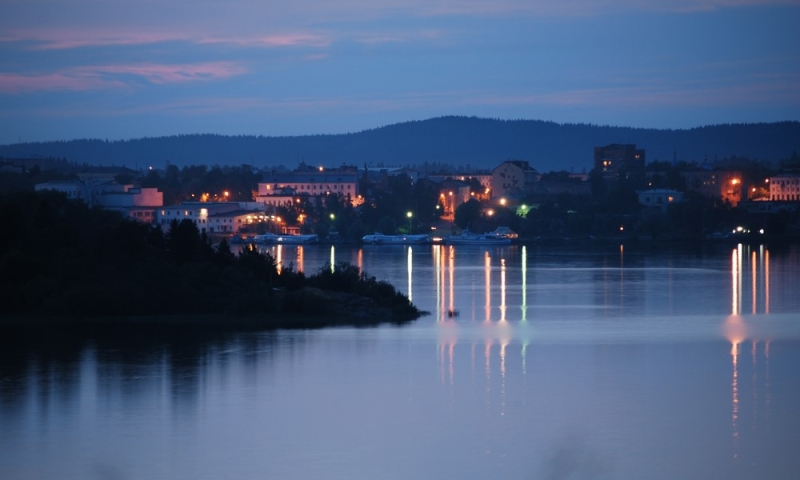
Since Sortavala is located on the shores of Lake Ladoga, from here you can go to the main attractions of the reservoir. If you want a relaxing holiday, just rent a house in one of the lakeside park hotels and enjoy the views. Fans of kayaking and catamaran rafting have long chosen the lake: the best time for such activity is June and July, the water has already warmed up enough and there are no stormy days usual for August.
Incredibly beautiful at any time of the year Ladoga Skerries National Park(skerries are an unusual landscape consisting of a large number of tiny rocky and wooded islands – they arose due to the ancient process of glacier movement). This park is often compared to the Norwegian fjords, it is so picturesque and original. The largest and most colorful of the islands of the archipelago are Kilpola, Kuhka, Sorolansari, Lauvatsari, Putsari, Riekkalansari. You can go to the skerries by boat.
Of course, you can’t visit Sortavala and miss the opportunity to visit Valaam. Meteors depart to this island several times a day from the city pier and will take you there in 50 minutes along the picturesque Läppäjärvi Bay. A significant part of the Valaam archipelago is occupied by the Spaso-Preobrazhensky Monastery, founded at the end of the 11th century. This is a truly impressive structure: it includes 13 hermitages and 21 chapels, as well as the famous Valaam Gardens, where the monks grow not only apples and medicinal herbs, but even watermelons and pineapples. At the same time, not only pilgrims and admirers of religious tourism come to Valaam, but also people who are attracted by the beauty of northern nature, because this archipelago is an extraordinary beauty reserve with steep cliffs, bays, islands, internal lamb lakes and dense coniferous forests (many local trees more than 200 years old, and next to the monastery of All Saints there is a pine tree that is already over four centuries old).
Northern cuisine in Sortavala
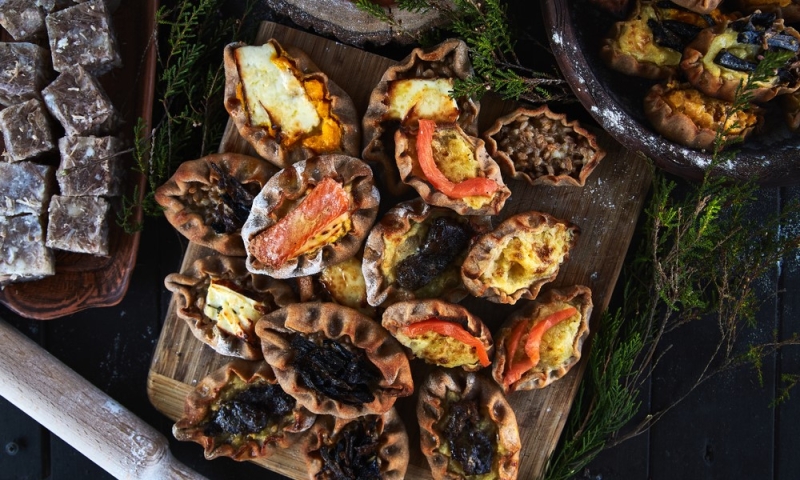
Karelian cuisine, like the region itself, has absorbed many traditions – Finnish, Swedish, Estonian and Russian. It is characterized by an abundance of fish and forest products: mushrooms and northern berries. Of course, Karelian cuisine is easy to find in Sortavala.
In the cafe “Lamberg” (village of Lamberg, 44) on the shore of the lake you can try kalitki – traditional pies with potatoes, rice, millet or smoked fish. They also serve Karelian trout, home-salted Ladoga pike perch and potato casserole with herring – kalalaatikko.
The panoramic country restaurant “Gustav Winter” (Tarulinna village) presents a modern variation on the theme of Karelian cuisine. The “stars” of the menu are fish soup with cream and red caviar, Ladoga pike perch in milk with root vegetables, pheasant pulota with mashed potatoes and lingonberry sauce, venison tartare with wild mushroom mayonnaise and many other equally attractive dishes traditional for the region. vegetables, roots and berries.
Another place with modern Karelian cuisine is the Piypun Pikha restaurant (Promyshlennaya St., 44), where you can taste dumplings with homemade cottage cheese, trout and spinach, fried pike perch with smoked puree and julienned wild mushrooms, venison beef stroganoff, kalitki and traditional infusions with lingonberries and sea buckthorn.
Where to stay in Sortavala
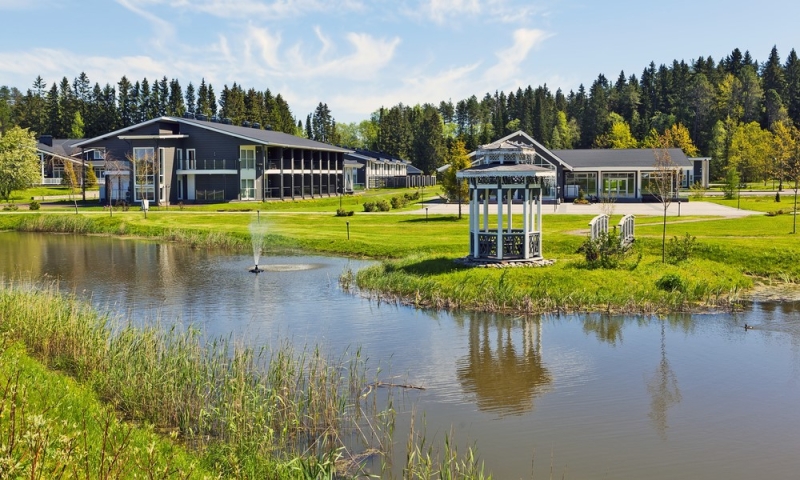
Hotels in the city
In the two-star hotel “Kaunis” next to the pier (rating 8.4) – from 4,900 rubles per day*.
At the Rodina Hotel (rating 9.1) – from 6,100 rubles per night*.
At Hotel Piipun Piha with a view of the embankment (rating 8.6) – from 6,500 rubles per night*.
Country hotels with SPA
In the Black Stones country park (score 9.0) – from 4,000 rubles per day*.
In the three-star hotel “Point on the Map” by the lake (rating 9.4) – from 7,700 rubles per day*.
In the houses in the forest “Dacha Wintera” (rating 10) – from 9,800 rubles per day*.
At home in nature
In the apart-hotel “Deluxe on the shore” – from 6,000 rubles per day*.
In wooden houses Forrest Lodge (rating 9.8) – from 7,800 rubles per day*.
In the cottage “House on the Shore 6” — from 10 500 rubles per day*.
At the Kruzhevo country hotel – from 11,500 rubles per night*.
In glamping Lago Ladoga with glass spheres – from 12 900 rubles per day*.
*Prices are current at the time of publication.

